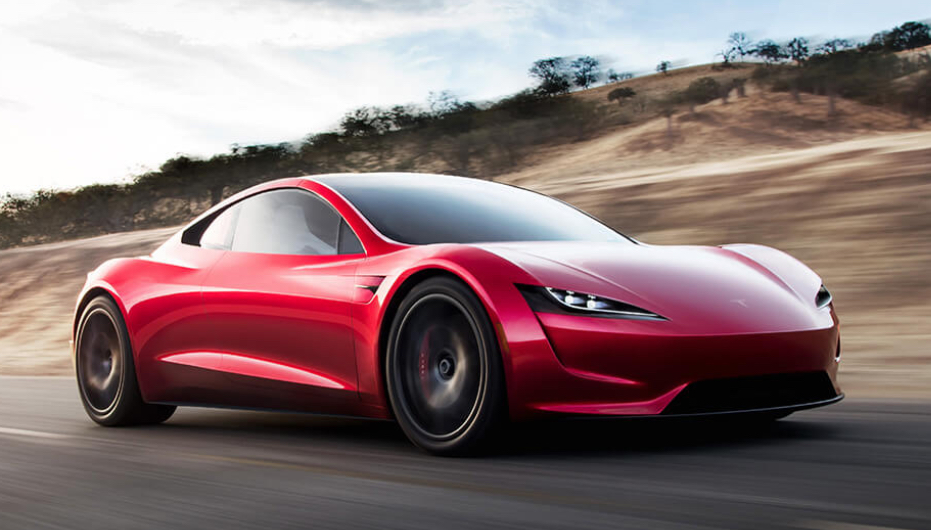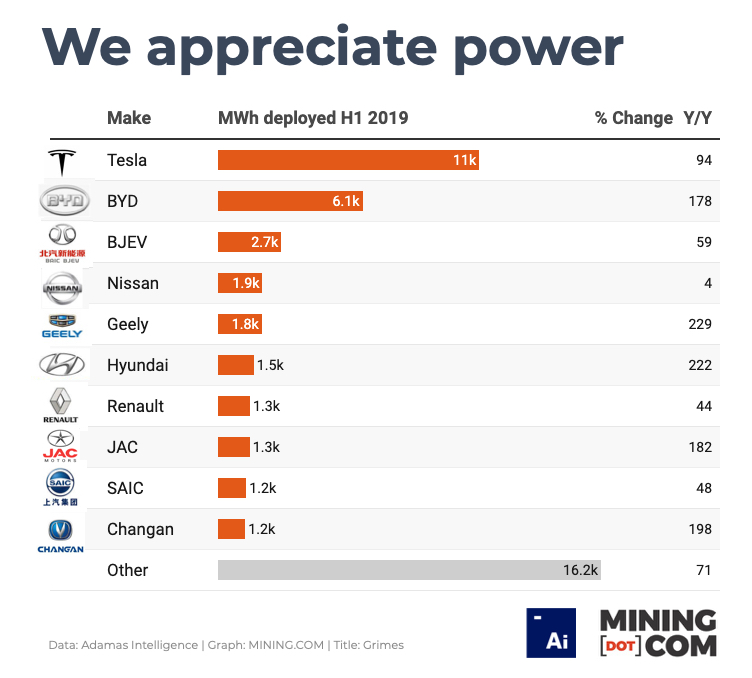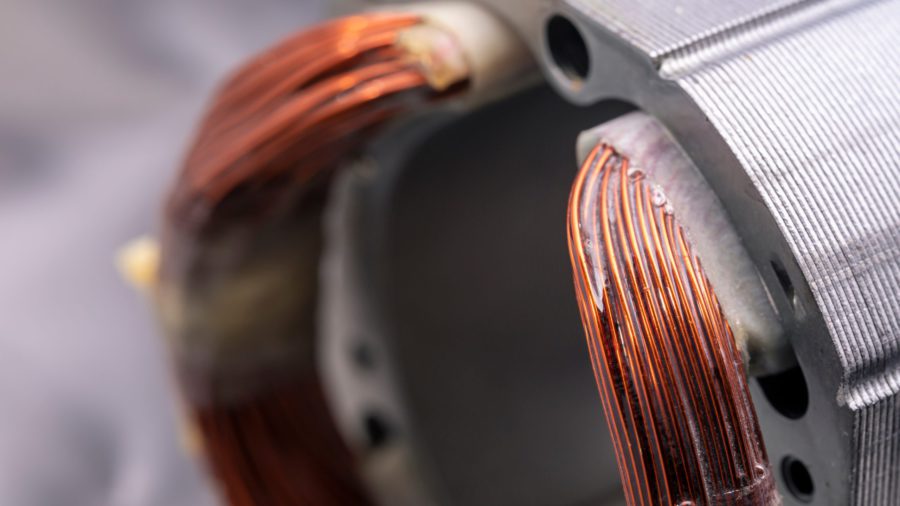Muskmobiles running rivals off the road

Adamas Intelligence tracks the battery capacity (and the metals used in them) of electric vehicles sold in over 90 countries around the world, which represent the entire global EV market.
The latest report by Toronto-based Adamas on global battery deployment in electrified passenger vehicles, including hybrids, shows that during the first half of 2019 capacity deployed in all newly-sold passenger EVs totalled 46.3 GWh, a jump of 89% over the same period the year prior.
Tesla’s dominance is even more remarkable considering that hybrids and plug-in hybrids still represent 64% of the global electrified vehicle market
The report should give the growing ranks of skeptics of industry pioneer Tesla some pause.
Elon Musk announced on Thursday the California company is set to deliver a record 100,000 units this quarter, which will only grow its lead on the competition.
On a MWh-basis, muskmobiles are not just shaming US and European competitors, but also the hundreds of EV manufacturers registered in China. And that’s before Tesla’s Shanghai factory – capacity 250K cars a year – had produced its first car.
In the first half of this year, Tesla deployed more battery power than its next three biggest rivals combined. That includes no.2 BYD (Build Your Dream) backed by Warren Buffett as long ago as 2008, which Tesla almost beat on a 2:1 basis.
In terms of size and growth, Tesla also sped away from China’s state-owned BAIC’s electric car company BJEV, despite Beijing’s helping hand in efforts to make EVs a cornerstone of the country’s technological advancement.
Other US manufacturers are no-shows again, as Bolts and Volts fail to energize the North American market and trendsetters among traditional brands Nissan and Renault lose momentum (in the EV world, 44% growth year on year growth qualifies as disappointing).

Hyundai’s popular new Kona saw the automaker shoot up the ranking with a more than threefold jump in battery power deployed. Korea has been slow off the EV grid, particularly given that the world’s third-largest and one of the fastest growing EV battery makers is LG Chem.
With a $50 billion battery purchase program, it should be just a matter of time before world no 1 automaker, Volkswagen, starts its climb to the top.
Wolfsburg made EVs central to its corporate future following 2015’s emissions scandal, and with further arrests of former VW and Audi bosses just this week, the company’s commitment to battery-powered cars can only strengthen.
Also conspicuous by their absences from the top 10 are European marquee names like BMW, Mercedes and Porsche (the VW-owned sports car maker’s new Taycan also had some catching up to do at the Nurburgring, but that’s another story).
Adamas says Tesla’s dominance stems from strong sales of its high capacity models, which have battery capacities of 60 to 100 kWh, versus the global sales-weighted-average of a mere 19.7 kWh for all EVs sold around the world.
Tesla’s dominance is even more remarkable considering that hybrids and plug-in hybrids still represent 64% of the global electrified vehicle market in terms of overall registrations.
{{ commodity.name }}
{{ post.title }}
{{ post.date }}


Comments